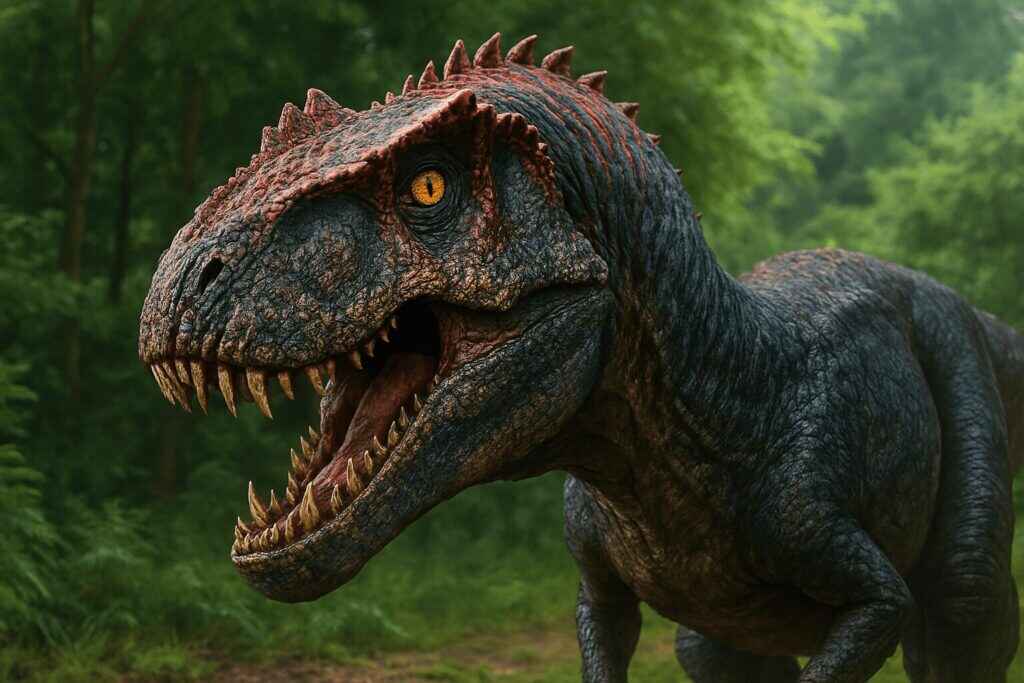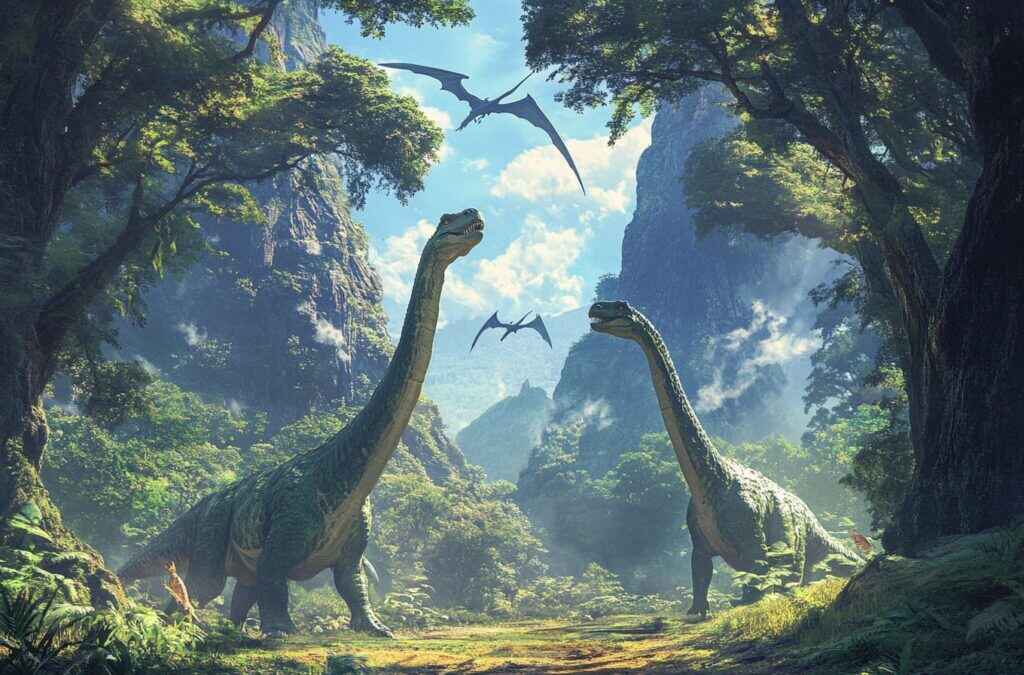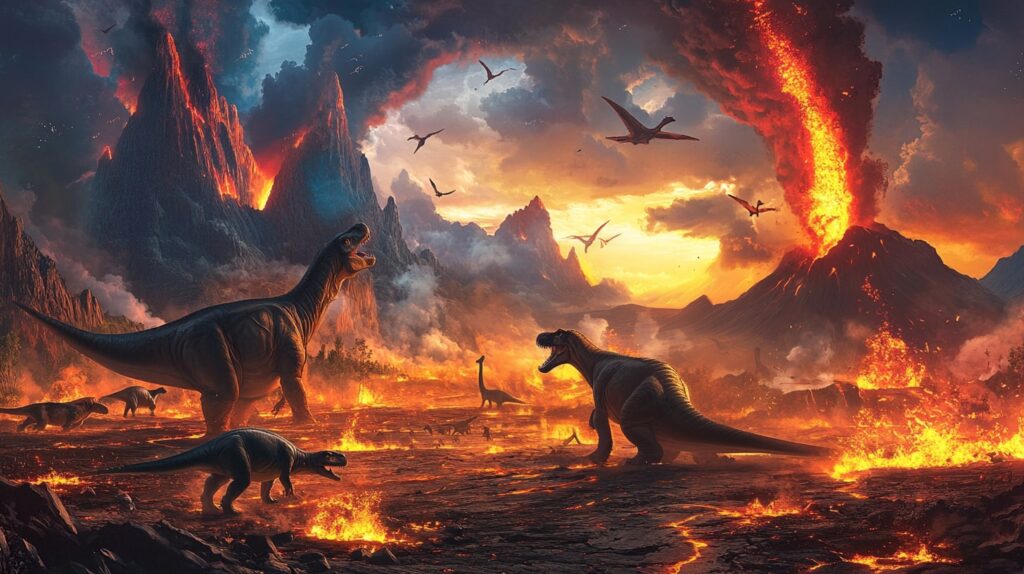The Ariyalur region in Tamil Nadu, India, is renowned for its prehistoric fossil discoveries, including dinosaur nests and eggs. However, the larger story of dinosaur extinction connects this region to one of Earth’s most dramatic geological events—the Deccan Traps eruptions. These massive volcanic eruptions, occurring 66 million years ago in what is now western India, played a pivotal role in the end-Cretaceous mass extinction.
Types of Dinosaurs in Ariyalur
Ariyalur’s fossil-rich layers have revealed two dominant groups of dinosaurs that thrived in the region during the Cretaceous period:
1. Carnosaurs

- Description: Large carnivorous therapods, similar to Allosaurus, with sharp teeth, powerful jaws, and bipedal locomotion.
- Diet: Predators that hunted smaller dinosaurs and reptiles.
- Size: Up to 9 meters (30 feet) in length.
- Fossil Evidence: Teeth fragments and claw marks found near fossilized eggs suggest these predators may have preyed on nesting sites.
2. Sauropods

- Description: Gigantic herbivores with long necks and tails, resembling Titanosaurus, a genus first discovered in India.
- Diet: Herbivorous, feeding on tall trees and vegetation.
- Size: Estimated to reach 12–15 meters (40–50 feet) in length.
- Fossil Evidence: Egg clusters, limb bones, and vertebrae confirm their presence.
These dinosaurs coexisted in a lush floodplain environment, which later faced drastic ecological shifts due to volcanic activity and climate change.
The Discovery of Dinosaur Eggs in Ariyalur
In 2009, researchers from Periyar University uncovered hundreds of fossilized dinosaur eggs in Sendurai village, located in the Cauvery river basin of Ariyalur. This site is considered one of India’s largest dinosaur nesting grounds. The eggs were found buried in sandy nests spread across a 2-square-kilometer area, with each nest containing clusters of seven to eight spherical eggs measuring between 13 and 20 cm in diameter. Ariyalur’s fossil-rich grounds are a result of its unique geological history. During the Cretaceous period (145–66 million years ago), this region was submerged under a shallow sea known as the Indo-Pacific Sea. Over millions of years, sedimentary rocks formed as the sea receded, creating layers rich in marine and terrestrial fossils.
Deccan Volcanism: A Catastrophic Event
The Deccan Traps, a massive volcanic province in western India, played a pivotal role in shaping Earth’s climate during the end-Cretaceous period, approximately 66 million years ago. These eruptions, spanning nearly a million years, released staggering amounts of greenhouse gases and aerosols into the atmosphere, triggering profound environmental changes that contributed to the mass extinction event.

One of the most significant impacts of Deccan volcanism was the release of an estimated 10.4 trillion tons of carbon dioxide (CO₂) and 9.3 trillion tons of sulfur dioxide (SO₂). These emissions caused global warming due to CO₂’s greenhouse effect and episodic cooling from SO₂ aerosols, which blocked sunlight and created “volcanic winters.” These rapid climate fluctuations destabilized ecosystems worldwide, making survival increasingly difficult for many species.
Acid rain resulting from SO₂ emissions further devastated terrestrial vegetation and freshwater ecosystems, while ocean acidification disrupted marine food chains by affecting shell-forming organisms like plankton and mollusks. Evidence from Ariyalur’s fossilized dinosaur nests suggests that these environmental stresses may have impacted dinosaur reproduction, as volcanic ash layers buried eggs before they could hatch.
While the Chicxulub asteroid impact remains a key factor in the end-Cretaceous extinction, recent studies suggest that Deccan volcanism alone could have been sufficient to trigger the global collapse of ecosystems. Together, these catastrophic events created a “one-two punch,” marking one of Earth’s most dramatic extinction events.
Why Ariyalur Matters
Ariyalur’s significance extends beyond its dinosaur discoveries. The region’s fossil record spans millions of years and includes evidence of marine transgressions, volcanic activity, and mass extinctions. It serves as a natural archive that helps scientists understand Earth’s evolutionary history and the factors that shape life on our planet.

